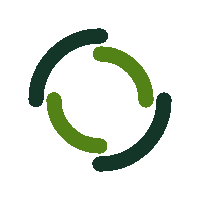Consider both on- and off-page methods when devising your SEO strategy. The higher-priority strategy for your business depends on your SEO efforts to date. If you’re new to SEO, you’ll likely see the largest gains through on-page enhancements made via edits, which is more indicative to search engines of how to crawl your site. Off-page SEO refers to SEO-related practices that do not occur on your website. The most common off-page strategy is building backlinks, whereby you try to generate links from other websites to yours. You can achieve this by pitching stories to journalists or contributing guest blog content for other brands.
📝 11. Configure PWA Elements
You should also keep the additional recommendations we made above related to titles. You can do this in column K of the template — and double-check each title length in column L. In column H of our template, you’ll have the opportunity to define your page’s target audience. A very important next step, which is often overlooked, is establishing a value proposition for each page of your website. Each page should have a goal aside from just ranking for a particular term. The URL should be pasted into column B, the page title into column C, and the description into column E.
☑ Showcases your experience and expertise
Regularly assessing the outcomes of your on-page SEO is key to constantly enhancing your website’s optimization. You can do this by tracking your keyword rankings and analyzing your traffic. To optimize for voice search, use conversational language in your content to align with users’ natural speaking style. Implementing conversational, question-based, and long-tail keywords helps optimize voice search, as these align with how users typically phrase their voice queries. Optimizing page speed is crucial because it significantly affects user experience and is a confirmed ranking factor for Google.
Long-tail keywords often have lower monthly search volumes, but they also have lower competition. It’s typically easier to decipher the search intent behind long-tail keywords since they are more specific. For the best results, limit your title tag to 50 to 60 characters to prevent Google from cutting it off in search results and use your targeted keyword at the beginning. Regular monitoring and updates are essential—at least once a month for routine checks. Conduct more in-depth assessments every quarter to ensure your content stays relevant and aligned with evolving search engine algorithms. Explore Backlinko’s array of in-depth marketing guides covering topics like off-page SEO, technical SEO, inbound link building, and more.
On-Page SEO: A Complete GuideFree Checklist
- LSI Keywords help give context to your content which basically just means words and phrases that are related to the topic you’re talking about.
- The most popular example of off-page SEO is link building, which involves getting other websites to link back to your website.
- Properly optimizing your pages and content can lead to the quickest ROI for the amount of time and energy spent.
- If Google notices that readers are “dwelling” on your content, they will push your results up a few spots.
- This could limit each image’s ranking potential and impact the traffic you get.
Ensure that all images and multimedia assets on your site are optimized for quick loading times. This includes compressing image files and using alt tags with relevant keywords, which helps in improving page load speed and SEO. Use internal linking wisely to guide visitors to related content within your site.
A common misconception is that more keywords translate to better SEO. This can lead to keyword stuffing, which harms readability and user experience, potentially resulting in search engine penalties. Instead, B2B companies should focus on creating valuable, user-oriented content SEO Anomaly that naturally incorporates keywords based on thorough research and genuine content relevance. The first step to creating high-quality content is choosing relevant keywords and topics. Conduct keyword research by searching Google for terms and seeing what surfaces for competitors and other websites. You can also use tools like Ahrefs, AnswerthePublic, SE Ranking, and UberSuggest.
If you’d like to automatically analyze all of the above-mentioned on-page SEO factors, try our SEO audit and reporting tool. But Google has gotten a lot smarter over the years and they actually penalize websites that practice keyword stuffing. So the first time someone comes to your website their web browser has to load all the website files like stylesheets, HTML, images and javascript before accessing the page. Instead, you should compress image files using an image compression tool such as TinyPNG or CompressPNG.
Keeping your content fresh enhances its relevance and increases your chances of maintaining strong rankings over time. Its goal is to improve a website’s credibility, authority, and reputation. Typically, off-page SEO involves interacting with other websites and online platforms. The development of the best SEO strategy for your website may require more than a week, especially if your business operates in a highly competitive niche.
However, they focus on different aspects and use unique techniques. No doubt, an effective SEO strategy should not only lead to higher rankings but also help you generate more income. Thus, focus on so-called “money” pages, which sell your goods or services.
Fixing orphan pages is often a simple process, and it can eventually improve your website’s overall SEO performance if done correctly. But they can harm your website’s overall SEO and Google performance eventually if not addressed properly. These statistics give us a good idea of where SEO is headed in the coming months and years. Let’s start with some stats that prove SEO is still a robust marketing channel. They’re constantly tweaking their rubrics for assessing content—not to mention the many outside influences. From semantic search to featured snippets to AI results, the space keeps evolving.



Leave a reply